Xiaoou Chen
ByteCover: Cover Song Identification via Multi-Loss Training
Oct 27, 2020
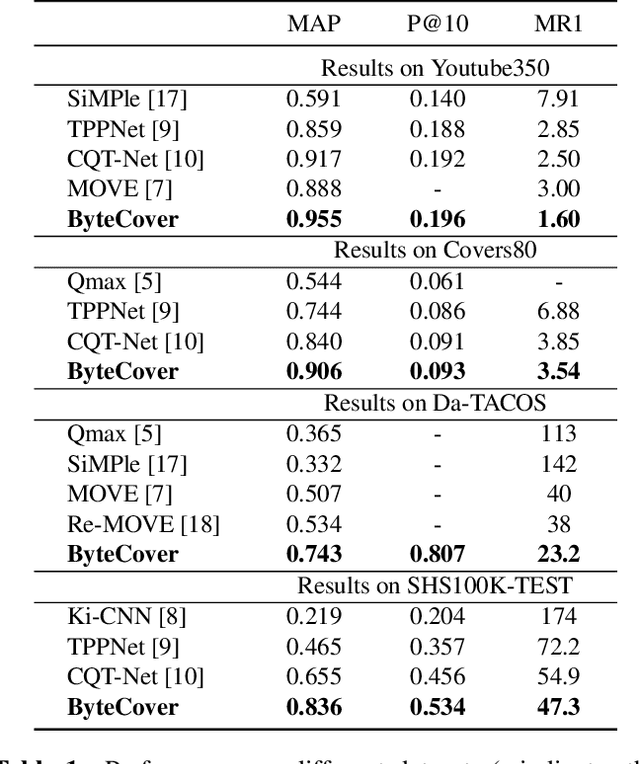
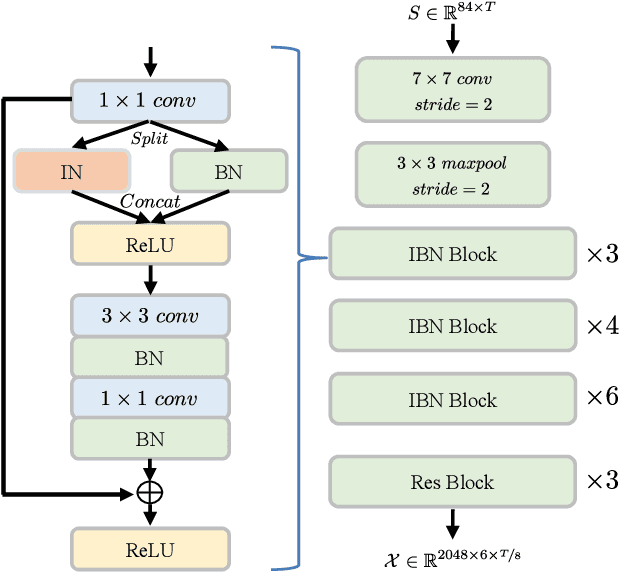

Abstract:We present in this paper ByteCover, which is a new feature learning method for cover song identification (CSI). ByteCover is built based on the classical ResNet model, and two major improvements are designed to further enhance the capability of the model for CSI. In the first improvement, we introduce the integration of instance normalization (IN) and batch normalization (BN) to build IBN blocks, which are major components of our ResNet-IBN model. With the help of the IBN blocks, our CSI model can learn features that are invariant to the changes of musical attributes such as key, tempo, timbre and genre, while preserving the version information. In the second improvement, we employ the BNNeck method to allow a multi-loss training and encourage our method to jointly optimize a classification loss and a triplet loss, and by this means, the inter-class discrimination and intra-class compactness of cover songs, can be ensured at the same time. A set of experiments demonstrated the effectiveness and efficiency of ByteCover on multiple datasets, and in the Da-TACOS dataset, ByteCover outperformed the best competitive system by 20.9\%.
Exploring Inherent Properties of the Monophonic Melody of Songs
Mar 20, 2020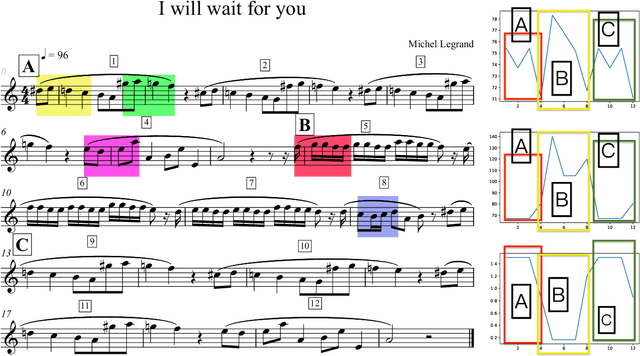
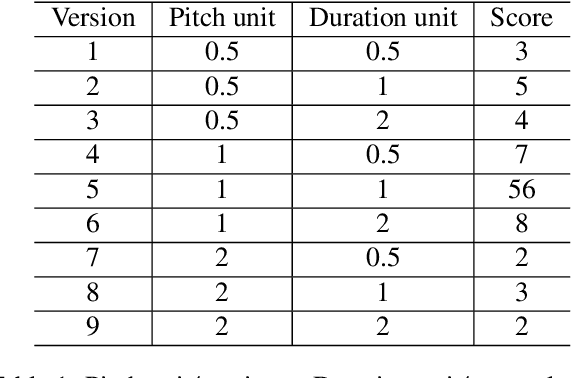

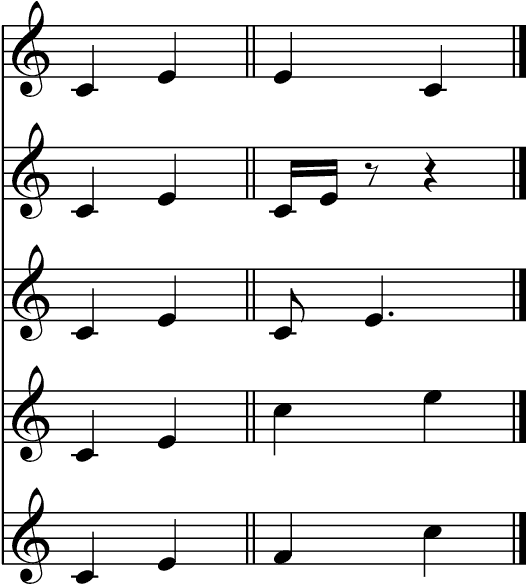
Abstract:Melody is one of the most important components in music. Unlike other components in music theory, such as harmony and counterpoint, computable features for melody is urgently in need. These features are highly demanded as data-driven methods dominating the fields such as musical information retrieval and automatic music composition. To boost the performance of deep-learning-related musical tasks, we propose a set of interpretable features on monophonic melody for computational purposes. These features are defined not only in mathematical form, but also with some considerations on composers 'intuition. For example, the Melodic Center of Gravity can reflect the sentence-wise contour of the melody, the local / global melody dynamics quantifies the dynamics of a melody that couples pitch and time in a sentence. We found that these features are considered by people universally in many genres of songs, even for atonal composition practices. Hopefully, these melodic features can provide nov el inspiration for future researchers as a tool in the field of MIR and automatic composition.
Learning a Representation for Cover Song Identification Using Convolutional Neural Network
Nov 01, 2019
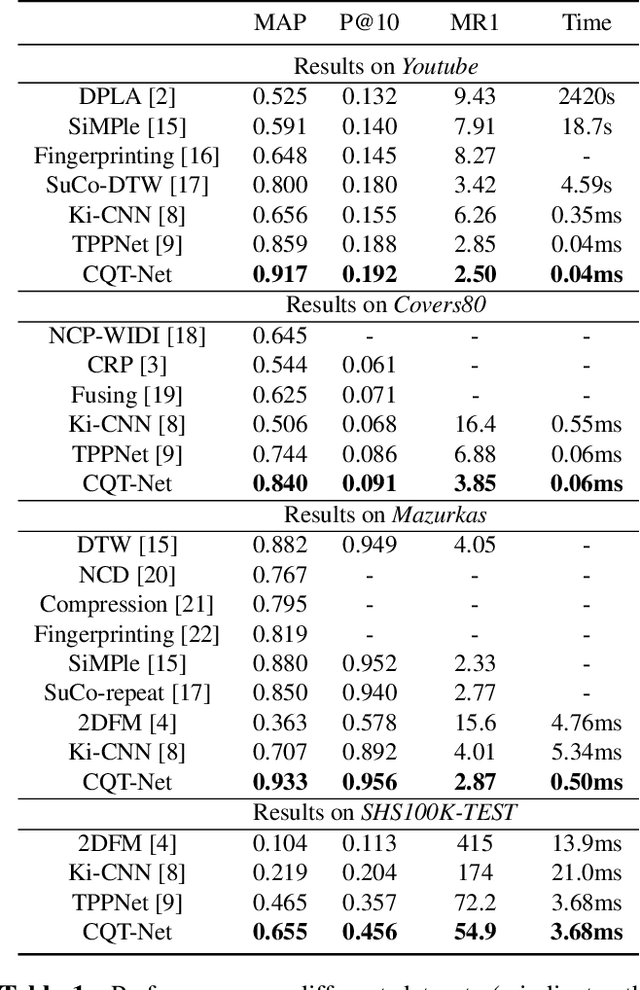
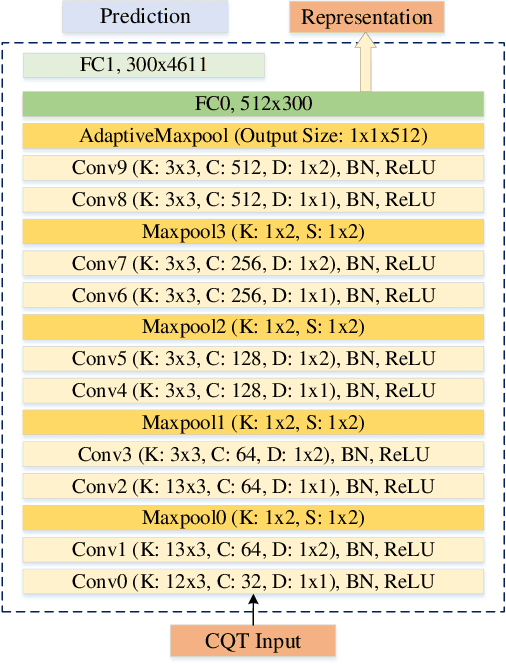
Abstract:Cover song identification represents a challenging task in the field of Music Information Retrieval (MIR) due to complex musical variations between query tracks and cover versions. Previous works typically utilize hand-crafted features and alignment algorithms for the task. More recently, further breakthroughs are achieved employing neural network approaches. In this paper, we propose a novel Convolutional Neural Network (CNN) architecture based on the characteristics of the cover song task. We first train the network through classification strategies; the network is then used to extract music representation for cover song identification. A scheme is designed to train robust models against tempo changes. Experimental results show that our approach outperforms state-of-the-art methods on all public datasets, improving the performance especially on the large dataset.
 Add to Chrome
Add to Chrome Add to Firefox
Add to Firefox Add to Edge
Add to Edge